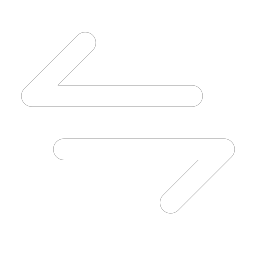Bookkeeping
How Do You Calculate a Company’s Equity?

Stockholders’ equity is the remaining assets available to shareholders after all liabilities are paid. It is calculated either as a firm’s total assets less its total liabilities or alternatively as the sum of share capital and retained earnings less treasury shares. Stockholders’ equity might include common stock, paid-in capital, retained earnings, and treasury stock. A company’s balance sheet, also known as a “statement of financial position,” reveals the firm’s assets, liabilities, and owners’ equity (net worth) at a specific point in time.
What Are the Uses of a Balance Sheet?
For example, if the assets are liquidated in a negative shareholder equity situation, all assets will be insufficient to pay all of the debt, and shareholders will walk away with nothing. Shareholders’ equity can help to compare the total amount invested in the company versus the returns generated by the company during a specific period. By comparing total equity to total assets belonging to a company, the shareholders equity ratio is thus a measure of the proportion of a company’s asset base financed via equity. Shareholders’ equity is the initial amount of money invested in a business. The fundamental accounting equation is assets equalling the sum of liabilities and equity. This equation is the basis for the balance sheet, which summarizes a company’s financial position at a specific point in time.
How Balance Sheets Work

Companies may do a repurchase when management cannot deploy all of the available equity capital in ways that might deliver the best returns. Shares bought back by companies become treasury shares, and the dollar value is noted in an account called treasury stock, a contra account to the accounts of investor capital and retained earnings. Companies can reissue treasury shares back to stockholders when companies need to raise money. If you want to calculate the value of a company’s equity, you can find the information you need from its balance sheet. Locate the total liabilities and subtract that figure from the total assets to give you the total equity. Shareholders consider this to be an important metric because the higher the equity, the more stable and healthy the company is deemed to be.
- Without context, a comparative point, knowledge of its previous cash balance, and an understanding of industry operating demands, knowing how much cash on hand a company has yields limited value.
- Look at the total asset turnover ratio and the return on asset ratio together.
- If it reads positive, the company has enough assets to cover its liabilities.
- If we rearrange the balance sheet equation, we’re left with the shareholders’ equity formula.
- Generate financial statements, such as balance sheets, income statements, and cash flow statements, whenever you need them.
How Shareholder Equity Works
When the company’s repurchased shares are absorbed, the number of outstanding shares on the market is reduced. The result is fewer shares on the market, and the ownership percentage of each investor increases. That’s why buybacks benefit shareholders because they always increase the stock’s value in the short term. However, the corporation’s success and growth still depend on how the company is managed. An alternative calculation of company equity is the value of share capital and retained earnings less the value of treasury shares. For example, some investors might want stock repurchases, while others might prefer to see that money invested in long-term assets.
The Income Statement for Financial Ratio Analysis
For instance, a company may issue bonds that mature in several years’ time. Current liabilities are the company’s liabilities that will come due, or must be paid, within one year. Within each section, the assets and liabilities sections of the balance sheet are organized by how current the account is. So for the asset side, the accounts are classified typically from most liquid to least liquid. For the liabilities side, the accounts are organized from short- to long-term borrowings and other obligations.
Importance of the Balance Sheet
The makeup of a retailer’s inventory typically consists of goods purchased from manufacturers and wholesalers. If you are a shareholder of a company or a potential investor, it is important to understand how the balance sheet is total equity formula structured, how to read one, and the basics of how to analyze it. In order to assess how large the gap is between the market value and book value of a company’s equity, analysts will often use the Price-to-Book (P/B) ratio.
Non-Current (Long-Term) Liabilities

He is a CFA charterholder as well as holding FINRA Series 7, 55 & 63 licenses. He currently researches and teaches economic sociology and the social studies of finance at the Hebrew University in Jerusalem. For example, many soft-drink lovers will reach for a Coke before buying a store-brand cola because they prefer the taste or are more familiar with the flavor. If a 2-liter bottle of store-brand cola costs $1 and a 2-liter bottle of Coke costs $2, then Coca-Cola has brand equity of $1. The content within this article is meant to be used as general guidelines and may not apply to your specific situation. Always consult with a professional for specific and individual accounting advice.
Stockholders’ Equity and Paid-in Capital
Enter your name and email in the form below and download the free template now! You can use the Excel file to enter the numbers for any company and gain a deeper understanding of how balance sheets work. Treasury stocks are repurchased shares of the company that are held for potential resale to investors. It is the difference between shares offered for subscription and outstanding shares of a company. The “Treasury Stock” line item refers to shares previously issued by the company that were later repurchased in the open market or directly from shareholders.

- Stockholders’ equity might include common stock, paid-in capital, retained earnings, and treasury stock.
- Total assets are the total of current assets, such as marketable securities and prepayments, and long-term assets, such as machinery and fixtures.
- Shareholder equity is the difference between a firm’s total assets and total liabilities.
- In total, this question pertains to the structure of the income statement.
- Shareholders Equity is the difference between a company’s assets and liabilities, and represents the remaining value if all assets were liquidated and outstanding debt obligations were settled.
- Another fixed charge would be lease payments if the company leases any equipment, a building, land, or anything of that nature.



